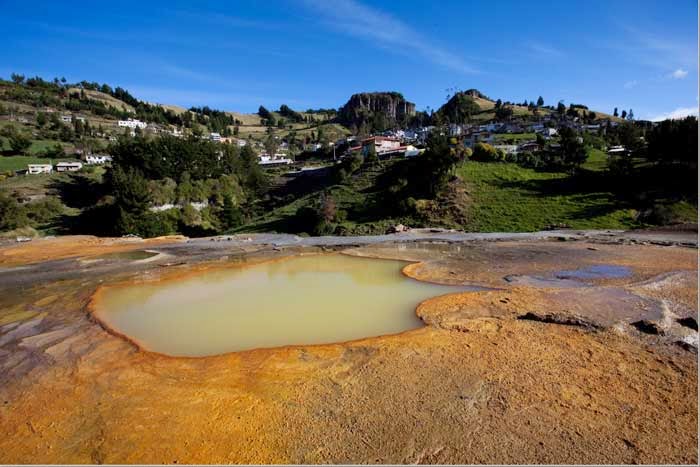Salinas de Guaranda took its name on behalf of the salt water mines that can be found when walking the river thatcrosses it. After the arrival of the Spaniards and until recent years the exploitation of these salt mines was the main economic activity of the Until the 70s, Father Antonio Polo arrived, a Salesian priest and educator born in Italy, with some Salesian missionaries and the population began to prosper little by little through the promotion of cooperativism and the solidarity economy.
ELABORATION PROCESS OF THE SALINAS SALT.
Firstly, the water with little salty consistency is obtained from the two slopes of the CANDO GUARMI and the CANDO CARI, this is thrown to the salting, where the water is deposited, the same one that is watered several times on the small rocky surface that is connected to the salting, after obtaining a salty consistency this water is deposited in the chagra, which is a larger hole that is also covered with rock, when the water is deposited in the chagra this water is again processed by watering several times, once that it dries with the solar rays, with this a high salt consistency is obtained and this is verified through testing with a chicken egg, it is placed in the salt water that is in the chagra and if it floats it can confirm that it is ready, to keep in the well, a rocky hole that is attached to the earth, until the family plans to produce salt.

To prepare the salt, it is first transferred into jars filled with salt water on donkeys, llamas or loaded on the back of people. Once it is in the house, it is put to cook in a big steel pan and wood is used for the fire, during 8 hours, time in which the water is evaporated and the liquid becomes solid, once it’s obtained the salt rich in iodine is molded in a cup-shaped ceramic vessel and placed in the burning coal; so that it dries and soon some it is tied with straw that is obtained from the plateau, once this list is put on sale in the local shops.
